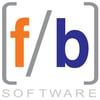There is nothing more stressful than dealing with a food recall. Food issues can happen throughout the entire supply chain process, whether the problem occurred while the food was growing on the farm, during the processing, or when shipped out to retailers. There are several different reasons why a food product may be recalled. Timely communication must be performed to ensure that the product is pulled from the shelves and that the public understands the recall in case they have purchased the specific product.
Food Recall Reasons
Three reasons may cause a food recall.
- Food may be mislabeled as types of allergens such as milk, nuts or food additives may not be included in the label's information.
- Physical contamination may occur during the processing of the food as glass, plastic or metal pieces may be introduced.
- Pathogen contamination can occur anytime during the food supply chain as dangerous microorganisms can cause serious diseases or illnesses.
These three food recalls will fall into different classifications based on how much of a health risk may result from them. A Class I recall usually indicates a serious adverse health defect that could be caused by the food product. Class II indicates where a temporary health hazard may occur, and Class III is when a health problem isn't likely to happen but the food product has violated local, state or federal regulations.
Food Recall Communication
A food recall may be initated through government agencies or voluntarily through the manufacturer or distributor. While there will be numerous  behind-the-scenes planning and strategies involved with the recall that is performed by the manufacturer, distributor and government agencies, public communication is essential to lower the risks to people's health. The basic timeline and processes involved with communicating about the food recall with the public are as follows according to the FDA:
behind-the-scenes planning and strategies involved with the recall that is performed by the manufacturer, distributor and government agencies, public communication is essential to lower the risks to people's health. The basic timeline and processes involved with communicating about the food recall with the public are as follows according to the FDA:
Step 1: The FDA's Division Recall Coordinator (DRC) will review recall strategies to determine if a public warning should be initiated. Then the DRC will provide the company who is a part of the recall with press release models that have hazard warning statements that is appropriate for the food recall.
Step 2: The company will provide a public warning draft to the DRC for proper review. If there are deficiencies in the public warning statement, the company and DRC will work to modify the draft to place in the necessary hazard warning statements
Step 3: Once there is DRC approval of the draft public warning, a copy of the food recall warning will be given to the DRC who will forward it to other government agencies as a request will be made to post the warning on the FDA's website. The company will issue the food recall warning via their website, press service and other communication methods.
Step 4: If the company refuses to issue a food recall warning to the public, the FDA will initiate a process to provide the food recall warning to the public.
Providing safe food products to the public is paramount for every company that is involved in the food supply chain. Instituting product traceability can allow food companies to track issues in their supply chains and address these problems to protect the public's health. If you are interested in customer service software that provides traceability and other food safety solutions, contact FreshByte Software.





